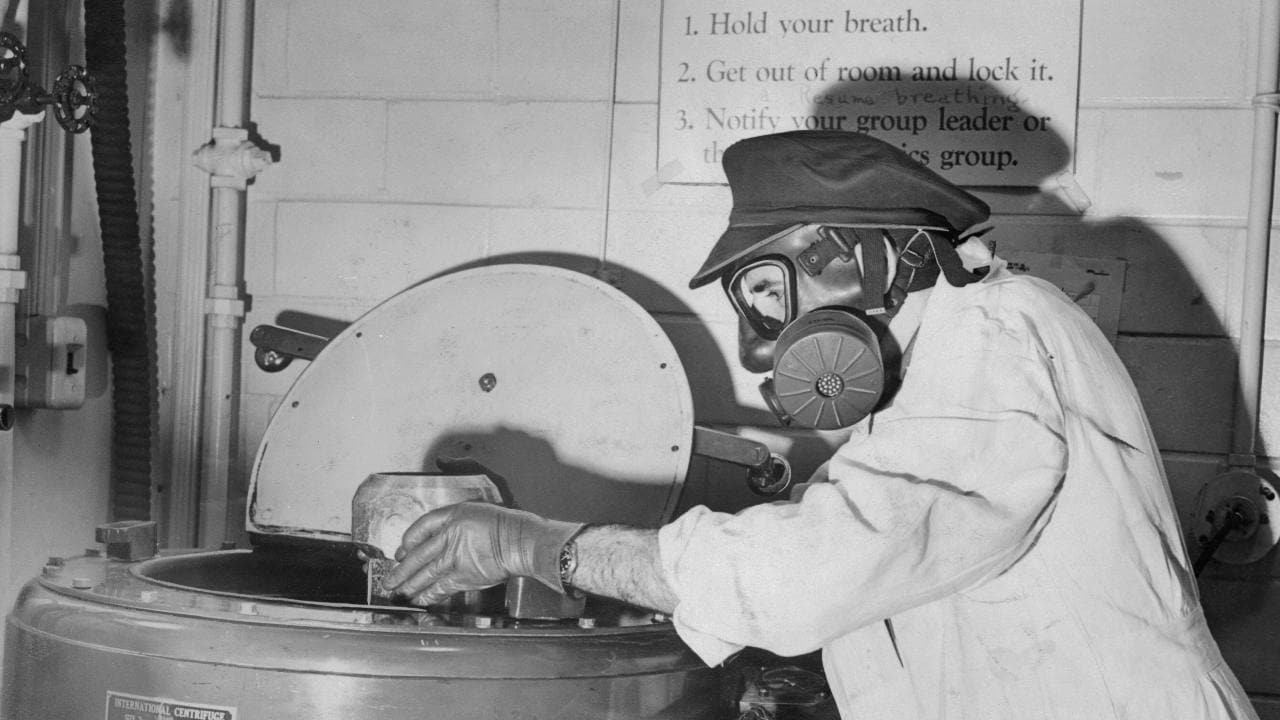Environment & Energy
In reply to the discussion: Operator of Japan's wrecked Fukushima Daiichi nuclear plant prepares to restart another plant [View all]Kid Berwyn
(18,051 posts)FYI: While I am anti-nuke, I do give a shit "about the 80 to 90 million people who died from air pollution over the last 13 years." That's why I bring up plutonium, spread across Japan and around the planet from Fukushima.
About that:
DOE-STD-1128-98
Guide of Good Practices for Occupational Radiological Protection in Plutonium Facilities
EXCERPT...
4.2.3 Characteristics of Plutonium Contamination
There are few characteristics of plutonium contamination that are unique. Plutonium
contamination may be in many physical and chemical forms. (See Section 2.0 for the many
potential sources of plutonium contamination from combustion products of a plutonium fire
to radiolytic products from long-term storage.) The one characteristic that many believe is
unique to plutonium is its ability to migrate with no apparent motive force. Whether from
alpha recoil or some other mechanism, plutonium contamination, if not contained or
removed, will spread relatively rapidly throughout an area.
Original Source (link now bad): http://energy.gov/sites/prod/files/2013/07/f2/doe-std-1128-98_cn2.pdf
Internet Archive (where you can download your very own PDF copy): https://web.archive.org/web/20170218203802/https://energy.gov/sites/prod/files/2013/07/f2/doe-std-1128-98_cn2.pdf

Something important from nine years ago about the dearth of public Fukushima information:
News Coverage of Fukushima Disaster Found Lacking
American University sociologist’s new research finds few reports identified health risks to public
By Rebecca Basu
American University, March 10, 2015
Four years after the 2011 Fukushima Daiichi nuclear disaster, the disaster no longer dominates U.S. news headlines, though the disabled plant continues to pour three tons of radioactive water into the ocean each day. Homes, schools and businesses in the Japanese prefecture are uninhabitable, and will likely be so forever. Yet the U.S. media has dropped the story while public risks remain.
A new analysis by American University sociology professor Celine Marie Pascale finds that U.S. news media coverage of the disaster largely minimized health risks to the general population. Pascale analyzed more than 2,000 news articles from four major U.S. outlets following the disaster's occurrence March 11, 2011 through the second anniversary on March 11, 2013. [font color="green"]Only 6 percent of the coverage??129 articles—focused on health risks to the public in Japan or elsewhere. Human risks were framed, instead, in terms of workers in the disabled nuclear plant.[/font color]
Disproportionate access
"It's shocking to see how few articles discussed risk to the general population, and when they did, they typically characterized risk as low," said Pascale, who studies the social construction of risk and meanings of risk in the 21st century. "We see articles in prestigious news outlets claiming that radioactivity from cosmic rays and rocks is more dangerous than the radiation emanating from the collapsing Fukushima Daiichi nuclear plant."
Pascale studied news articles, editorials, and letters from two newspapers, The Washington Postand The New York Times, and two nationally prominent online news sites, Politico and The Huffington Post. These four media outlets are not only among the most prominent in the United States, they are also among the most cited by television news and talk shows, by other newspapers and blogs and are often taken up in social media, Pascale said. In this sense, she added, understanding how risk is constructed in media gives insight into how national concerns and conversations get framed.
Pascale's analysis identified three primary ways in which the news outlets minimized the risk posed by radioactive contamination to the general population. Articles made comparisons to mundane, low-level forms of radiation;defined the risks as unknowable, given the lack of long-term studies; and largely excluded concerns expressed by experts and residents who challenged the dominant narrative.
[font color="green"]The research shows that corporations and government agencies had disproportionate access to framing the event in the media, Pascale says. Even years after the disaster, government and corporate spokespersons constituted the majority of voices published. News accounts about local impact—for example, parents organizing to protect their children from radiation in school lunches—were also scarce. [/font color]
Globalization of risk
Pascale says her findings show the need for the public to be critical consumers of news; expert knowledge can be used to create misinformation and uncertainty—especially in the information vacuums that arise during disasters.
"The mainstream media—in print and online—did little to report on health risks to the general population or to challenge the narratives of public officials and their experts," Pascale said. "Discourses of the risks surrounding disasters are political struggles to control the presence and meaning of events and their consequences. How knowledge about disasters is reported can have more to do with relations of power than it does with the material consequences to people's lives."
While it is clear that the Fukushima Daiichi nuclear meltdown was a consequence of an earthquake and tsunami, like all disasters, it was also the result of political, economic and social choices that created or exacerbated broad-scale risks. In the 21st century, there's an increasing "globalization of risk," Pascale argues. Major disasters have potentially large-scale and long-term consequences for people, environments, and economies.
"People's understanding of disasters will continue to be constructed by media. How media members frame the presence of risk and the nature of disaster matters," she said.
SOURCE with Links: http://www.american.edu/media/news/20150310-Fukushima.cfm
One might think discussing the disaster at Fukushima would be of interest to those who care for humanity, life and our planet. That would be, in fact, democratic.